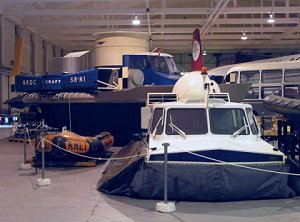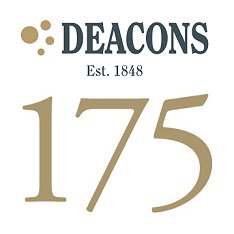|
|||||||||
Vickers in SkirtsSwindon's role in the history of the hovercraftThe world’s first hovercraft was launched exactly 50 years ago today – and the Swindon area has two connections with the development of the craft. The first ever hovercraft is now part of the collection at the Science Museum, Wroughton, while South Marston-based Vickers-Armstrong produced the first commercial passenger-carrying hovercraft at its works – now the site of the Honda plant. The hovercraft was invented by British eccentric Christopher Cockerill, and the first working prototype was called Saunders Roe Nautical 1 (SR-N1), after the boatyard where it was built. It was unveiled on the Isle of Wight, on June 11, 1959. Cockerill proved the viability of a craft that would float on a cushion of air, and could therefore travel on sea and land, after experiments involving an old coffee tin, a can of cat food and a hairdryer.
The British Government had sat on the invention for years, trying to work out if it had a military capability. They never did find a role for it, but South Marston workers would prove it had a commercial use. In the early Sixties, several major technology companies were spending serious money on investigating and developing the craft. Although Vickers-Armstrong famously and gloriously produced the Spitfire under the Supermarine marque, the firm was much more diverse, and by the 1960s could really be described as a conglomerate with interests in many branches of engineering. As its influence in aviation waned - Supermarine ceased to exist in 1963 and the Vickers aircraft brand disappeared in 1965 – marine technology was one of the aspects of the business managers were looking to expand, including hovercraft. Cue the South Marston factory, which carried out extensive development work, allied with a trial facility on the River Itchen at Southampton. Engineers at South Marston even came up with a design and prototype for a land-based hovercraft, called the Hover Rover, but is was the marine vessels that were capturing the imagination.
Vickers-Armstong’s first, called the VA1, was 25 feet long and was launched in the autumn of 1961, followed in 1962 by the slightly larger VA2. Then came the VA3, which, at 56 feet, was twice as long, was designed to carry up to 24 passengers – and was about to write itself into the history books. It was a VA3 that provided the world’s first commercial hovercraft service – acting as a ferry across the River Dee on July 20, 1962. However, the glory was short-lived. Although popular, the VA3 proved unreliable and unlaunchable in bad weather, and finished its two-month trial service a month early. The moment was gone, and it was left to other manufacturers to make a success of the invention. Hovercraft were seen as the perfect vessel for hopping across the Solent from Southsea to the Isle of Wight, so, in August 1962 – a month after the VA3’s pioneering trip – one began a regular service there that still continues to this day.
Six years later, the first cross-Channel hovercraft was introduced – a high-speed service that continued until 2000, when it was forced to give in to competition from the Channel Tunnel. Even by the mid-Sixties, it was already clear that hovercraft were failing to live up to their billing as the transport of future, and only really suited to specific locations. And now corporate and financial considerations were also coming to the fore. In 1966, competing arms of Vickers and Westland, along with the National Research and Development Corporation, were merged as the British Hovercraft Corporation, and with by far the majority shareholding, Westland designs were to prevail. The dream of Vickers-Armstrong leading hovercraft production and South Marston being the centre of the world’s hovercraft industry was over - but not before local workers had earned the Swindon area yet another place in transport history. |
|||||||||
|
||||||||
|
The Car Industry in Swindon |
||||||||
|
||||||||
|
||||||||
|
||||||||
|
||||||||
|
||||||||
|
||||||||
|
||||||||
|
||||||||
|
||||||||
|
|||||||||























